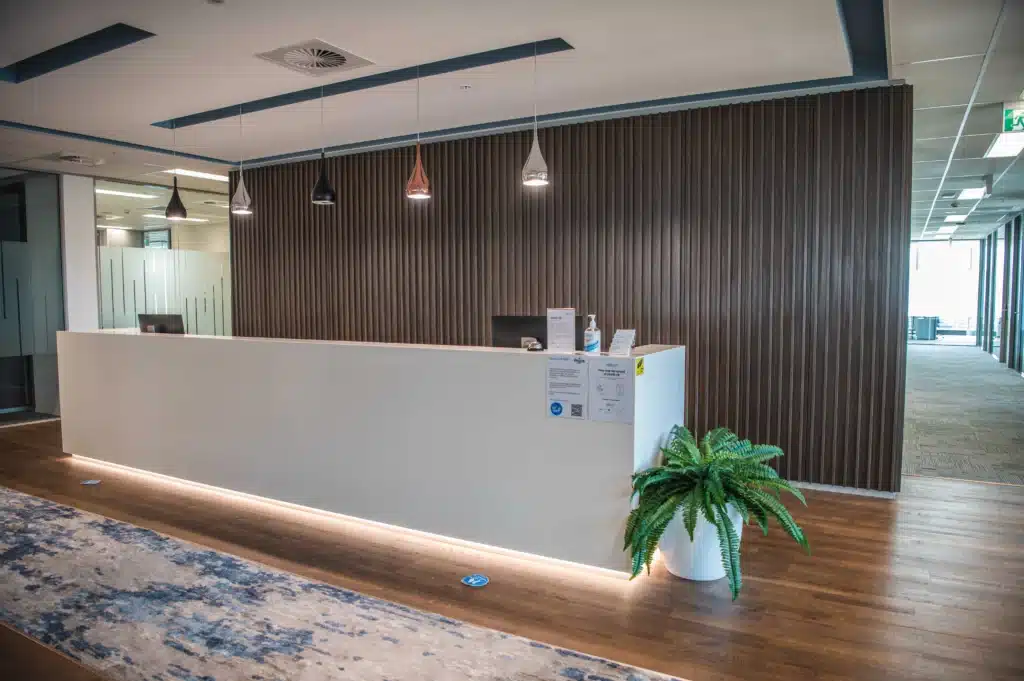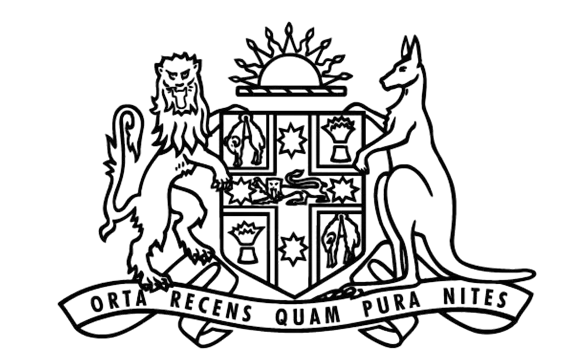Australia’s immigration landscape is set for significant changes in 2023. These immigration rule changes will reshape the pathways for skilled workers, students, and families seeking to call Australia home.
At Jameson Law, we’re closely monitoring these developments to provide our clients with the most up-to-date guidance. This post will explore the key updates, their potential impacts, and how they might affect your immigration journey.
What’s New in Australian Immigration?
Key Visa Categories and Recent Updates
Australia’s immigration system has undergone significant changes in 2023. The Australian government has introduced several new visa categories and pathways to attract highly skilled migrants while addressing systemic exploitation within the immigration system.
The Pacific Engagement visa (PEV) stands out as a notable addition. This visa is expected to commence in mid-2024, once all remaining administrative arrangements are in place. The PEV aims to strengthen Australia’s ties with its Pacific neighbours (a strategic move in regional diplomacy).
International students have received positive news as well. Subclass 485 Temporary Graduate visa holders will enjoy extended stay periods: four years for Bachelor’s, five years for Master’s, and six years for doctorate graduates. This change recognises the value of retaining highly educated individuals in Australia (a boost for the country’s knowledge economy).
Changes to Existing Visa Requirements
The Temporary Skilled Migration Income Threshold (TSMIT) has increased from $53,900 to $70,000 for sponsored applicants starting 1 July 2023. This marks the first increase in a decade and aims to ensure fair wages for skilled migrants.
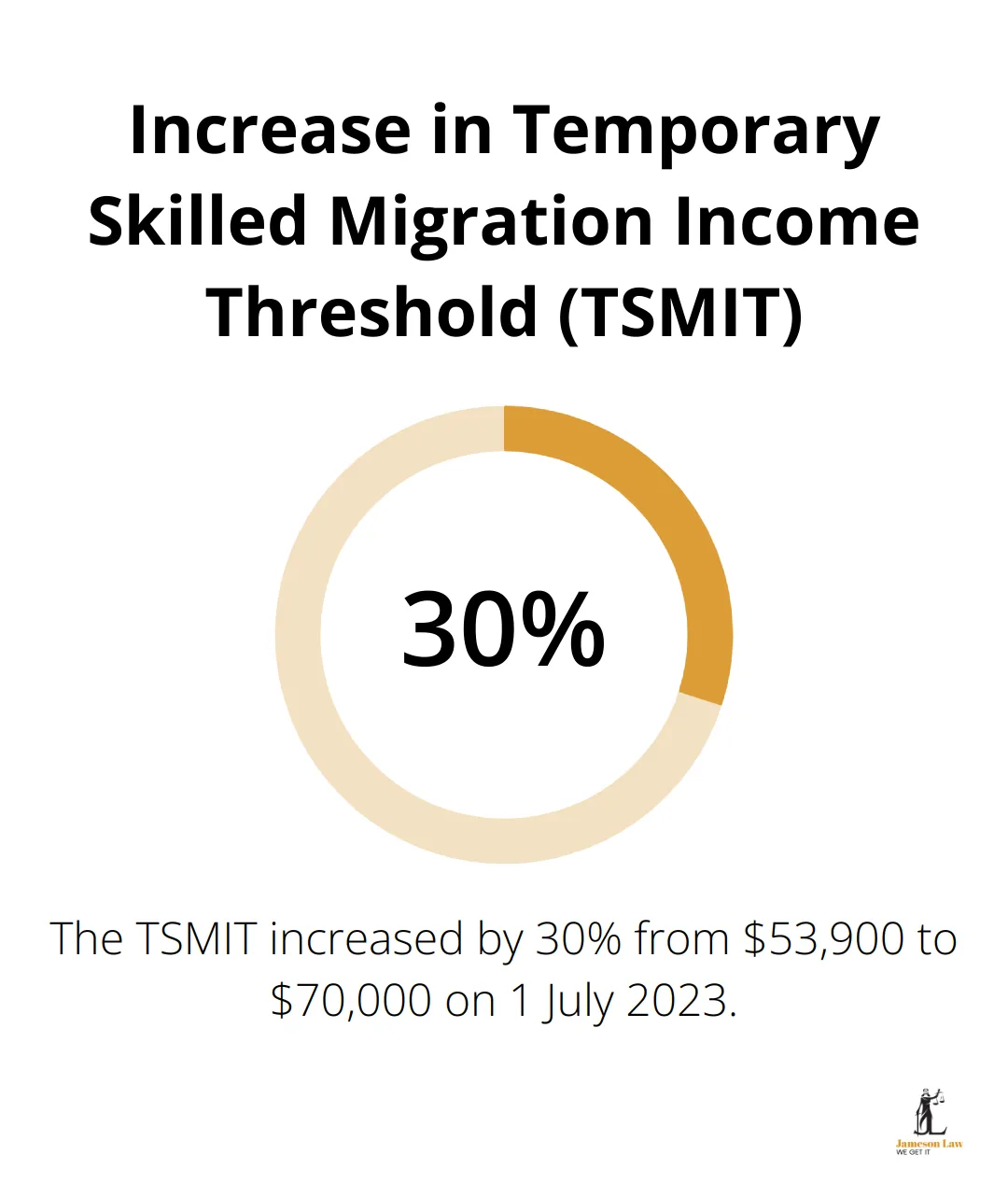
New Zealanders living in Australia for four years can now apply directly for Australian citizenship without needing a permanent visa first. This change, effective from 1 July 2023, simplifies the path to citizenship for many long-term residents (a welcome development for our Kiwi neighbours).
Current Challenges for Visa Applicants
Despite these positive changes, visa applicants still face challenges. Visa application charges for various visas, including visitor and student visas, have increased starting 1 July 2023. This increase in fees may pose financial barriers for some applicants.
Processing times remain a concern for many. However, the Australian government has invested an additional $630 million through the Department of Home Affairs and the Australian Border Force to improve the migration program and enhance border security.
Impact on Skilled Workers and Professionals
The increased TSMIT will significantly impact skilled workers and professionals. While it ensures better wages, it may also make it more challenging for some businesses to sponsor overseas workers, particularly in industries with lower average salaries.
Changes for International Students
International students will benefit from the extended stay periods for Temporary Graduate visas. However, they will also face stricter work restrictions. From 1 July 2023, student visa work restrictions will revert to 48 hours per fortnight, with exemptions for international students in the aged care sector until 31 December 2023.
These changes reflect Australia’s evolving approach to immigration, balancing the need for skilled workers with the protection of local job markets and the integrity of the education system. As the landscape continues to shift, staying informed about these changes becomes increasingly important for anyone considering migration to Australia.
What’s Changing in Australian Immigration for 2023?
Australia’s immigration system will undergo significant changes in 2023. New visa categories, updated requirements, and streamlined processes will address skill shortages, boost economic growth, and improve the overall efficiency of the immigration system.
New Visa Categories and Pathways
The Australian government will introduce several new visa categories to attract skilled migrants and strengthen regional ties. The Pacific Engagement visa (PEV) will launch in mid-2024, offering places for eligible citizens of select Pacific countries and Timor-Leste. This visa will provide a unique opportunity for individuals from these regions to contribute to Australia’s workforce.
Another significant addition is the Skills in Demand visa, which will replace the Temporary Skills Shortage visa. This new visa will allow eligible workers to stay in Australia for up to four years, with specific income thresholds set at AUD $76,515 for core skills (as of June 3, 2025).
Updates to Existing Visa Requirements
Existing visa categories will also see substantial updates. The Temporary Graduate visa (subclass 485) now offers extended stay periods: four years for Bachelor’s graduates, five years for Master’s graduates, and six years for doctorate graduates. This change recognises the value of retaining highly educated individuals in Australia and provides them with more time to gain valuable work experience and potentially transition to permanent residency.
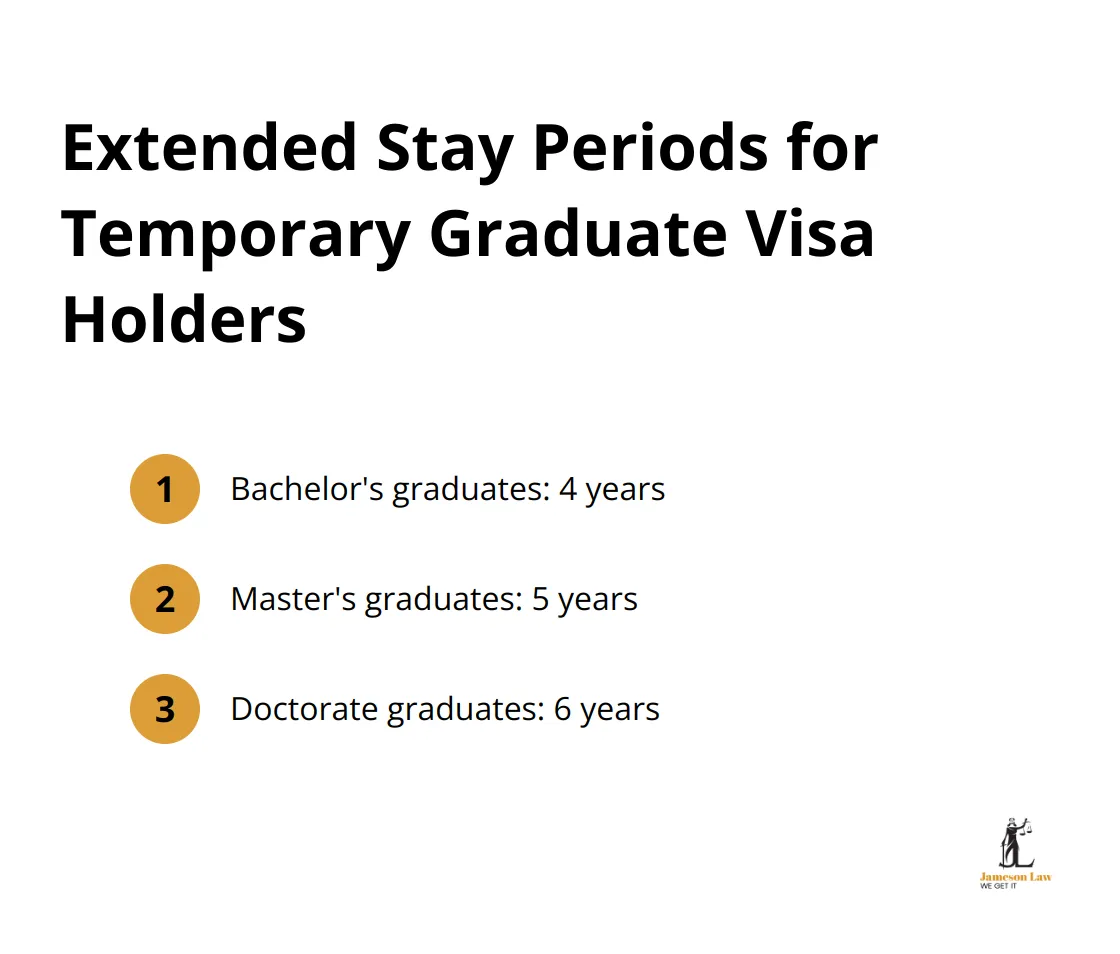
For New Zealand citizens, the path to Australian citizenship has been simplified. As of July 1, 2023, New Zealanders who have lived in Australia for at least four years can apply directly for citizenship without first obtaining permanent residency. This change strengthens the special relationship between Australia and New Zealand, making it easier for long-term Kiwi residents to fully integrate into Australian society.
Streamlined Processing and Application Procedures
The Australian government has invested significantly in improving visa processing times and procedures. This investment aims to address the backlog of visa applications and reduce processing times across various visa categories.
One notable change is the introduction of a pre-application ballot system for certain visas, set to be implemented from October 1, 2024. This system will manage high-demand visa categories more effectively, potentially reducing waiting times and improving the overall application experience for prospective migrants.
These changes demonstrate Australia’s commitment to modernising its immigration system, addressing skill shortages, and maintaining its position as an attractive destination for skilled migrants. As these new rules and processes come into effect, potential applicants should stay informed and seek professional advice to navigate the evolving immigration landscape successfully.
The impact of these changes will vary for different groups of immigrants, including skilled workers, international students, and family reunion applicants. Let’s explore how these new immigration rules will affect each of these groups in the next section.
How Will New Immigration Rules Affect Different Groups?
Skilled Workers and Professionals
The new immigration rules will create a mixed landscape for skilled workers and professionals. The increase in the Temporary Skilled Migration Income Threshold (TSMIT) to AUD $70,000 promises better wages for qualified individuals. However, this higher threshold might create challenges for businesses looking to sponsor overseas workers, especially in industries with lower average salaries.
The introduction of the Skills in Demand visa opens a new avenue for skilled migrants. This visa replaced the SC 482 Temporary Skills Shortage visa on December 7, 2024. This change provides more certainty for skilled workers and could position Australia as a more attractive destination for top talent.
International Students
International students will experience significant shifts under the new rules. The extension of stay periods for Temporary Graduate visa holders stands out as a major benefit. Bachelor’s graduates can now stay for four years, Master’s for five years, and doctorate graduates for six years. This extension allows students more time to gain valuable work experience and potentially transition to permanent residency.
The work restrictions for student visa holders have changed. From July 1, 2023, student visa holders can work up to 48 hours per fortnight while studying, with no work restrictions when the course is not in session. Students will need to strike a careful balance between their work and study commitments.
Family Reunion Applicants
Family reunion applicants will see some positive changes under the new rules. The streamlined pathway for New Zealand citizens to apply directly for Australian citizenship after four years of residence marks a significant development. This change will simplify family reunification for many long-term Kiwi residents in Australia.
The increase in visa application charges might create financial hurdles for some family reunion applicants. These applicants should factor in these increased costs when planning their migration journey.
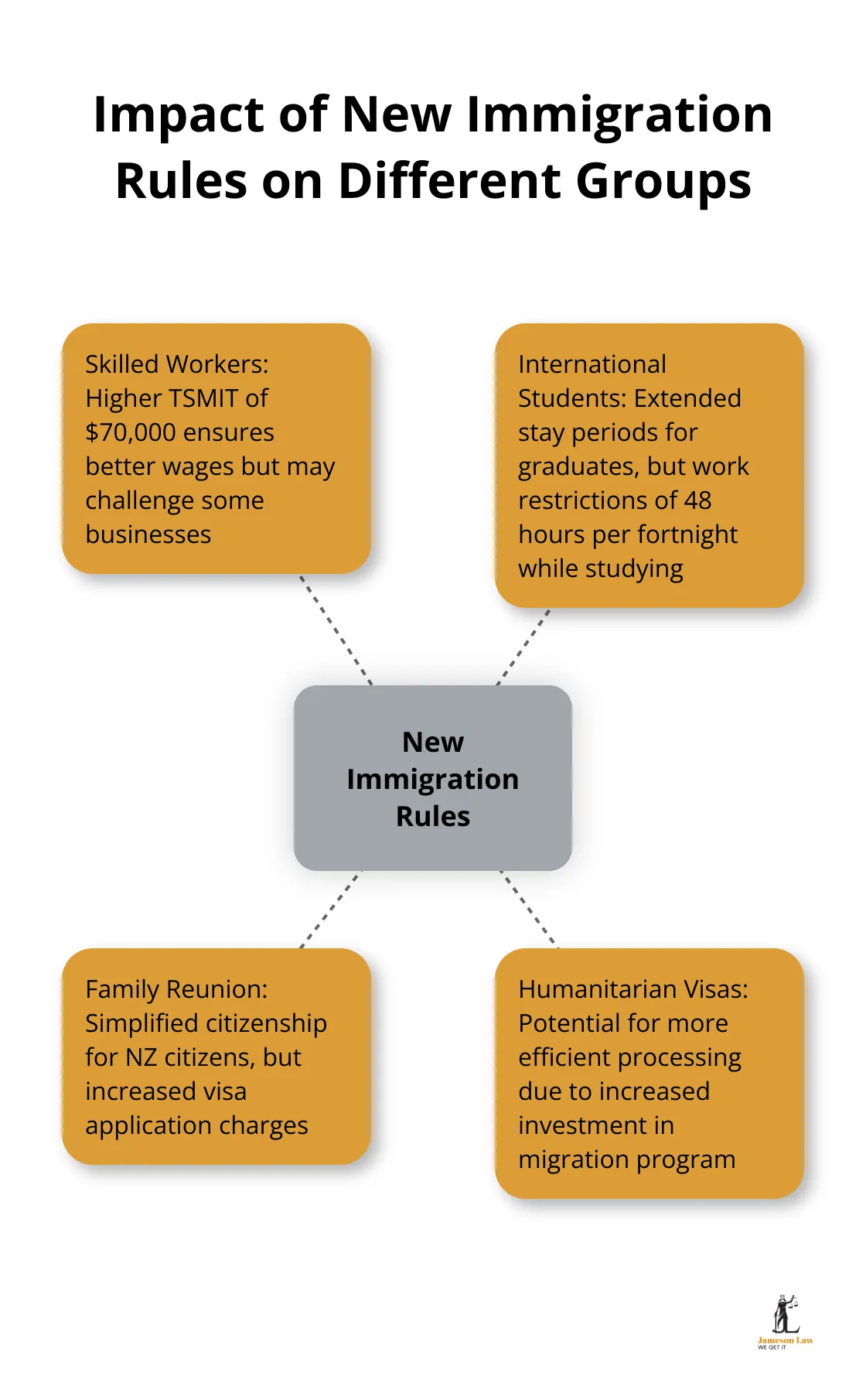
Humanitarian and Refugee Visa Applicants
For humanitarian and refugee visa applicants, the changes will have indirect but notable effects. The Australian Government’s investment of AUD $630 million to improve the migration program and enhance border security could lead to more efficient processing of humanitarian visas.
The introduction of the Pacific Engagement visa, while not directly a humanitarian visa, might indirectly impact this group. It could potentially reduce pressure on other visa categories, which might lead to more resources becoming available for processing humanitarian and refugee visas.
These changes reflect Australia’s evolving approach to immigration, which tries to balance economic needs with humanitarian obligations. As the landscape continues to shift, potential migrants should stay informed about these changes to navigate the complex immigration system effectively.
Final Thoughts
Australia’s immigration rule changes in 2023 will reshape pathways for skilled workers, students, and families. New visa categories, extended stay periods, and simplified citizenship processes for New Zealanders offer fresh opportunities. These changes address skill shortages and boost economic growth, but also present challenges such as increased visa fees and work restrictions for students.
Navigating these complex changes requires expert guidance. At Jameson Law, we provide specialised assistance through Australia’s evolving immigration landscape. Our experienced immigration lawyers can help you understand how these new rules apply to your situation and assist with visa applications.
Australia continues to refine its immigration policies in 2023 and beyond. Staying informed and seeking professional legal advice is essential for anyone considering migration to Australia. We’re here to help you navigate the complexities of Australia’s immigration system and achieve your goals in this dynamic environment.












